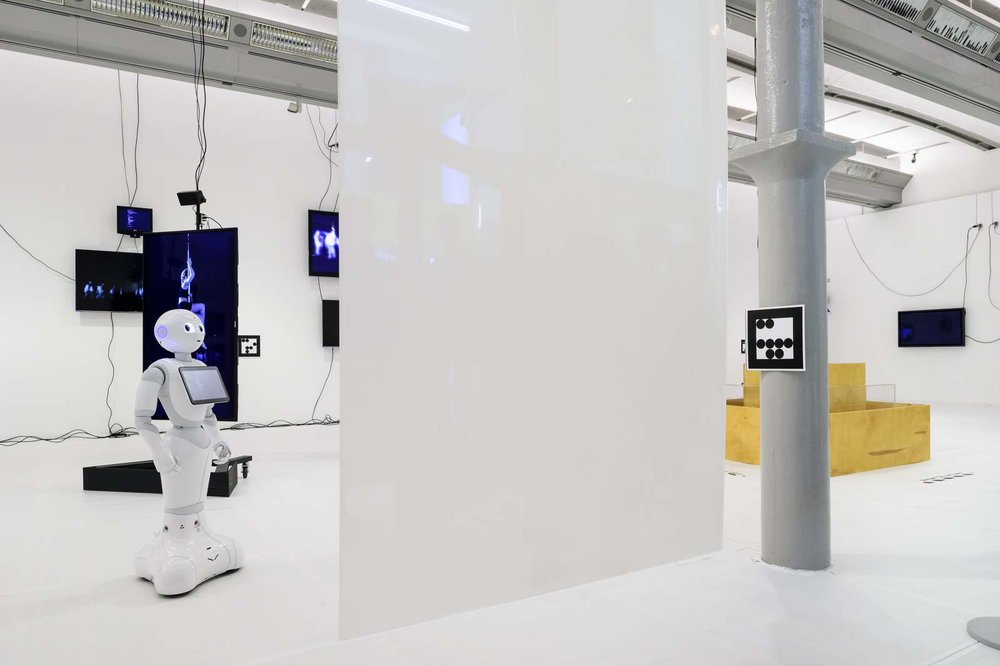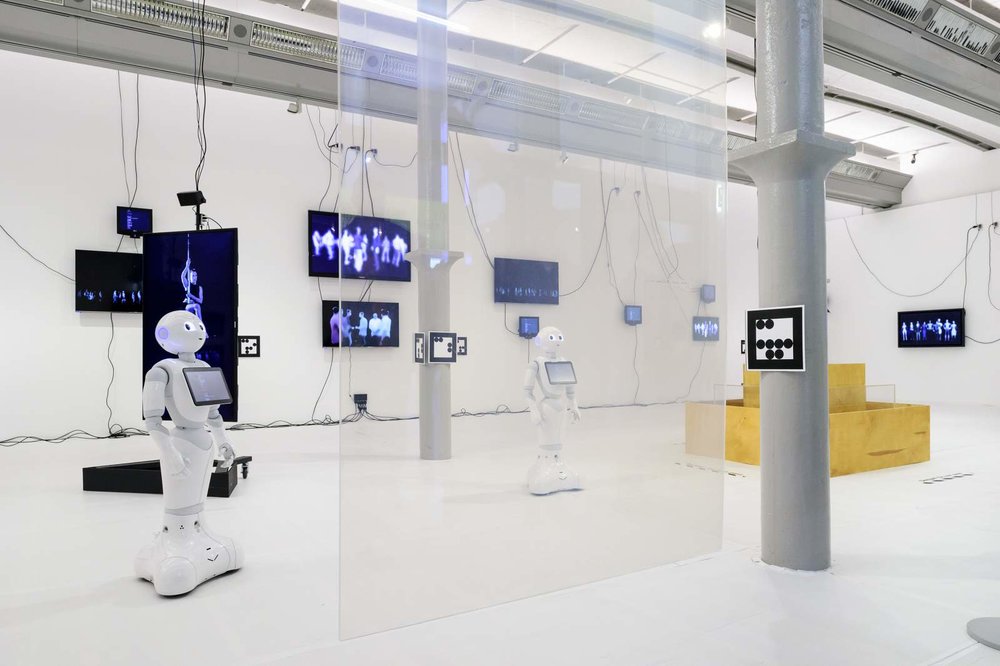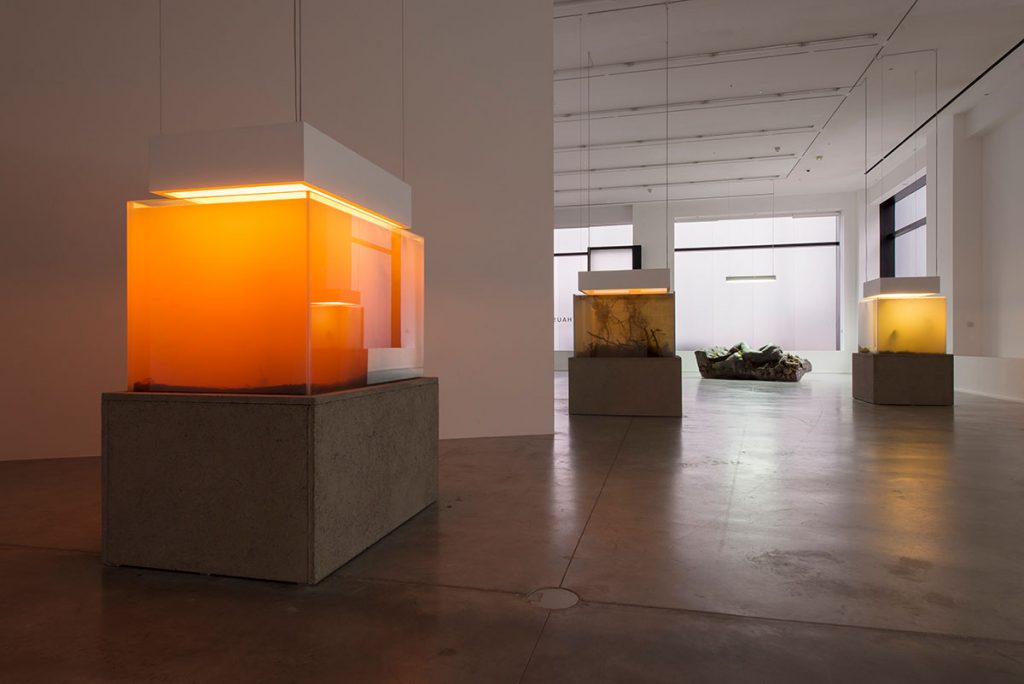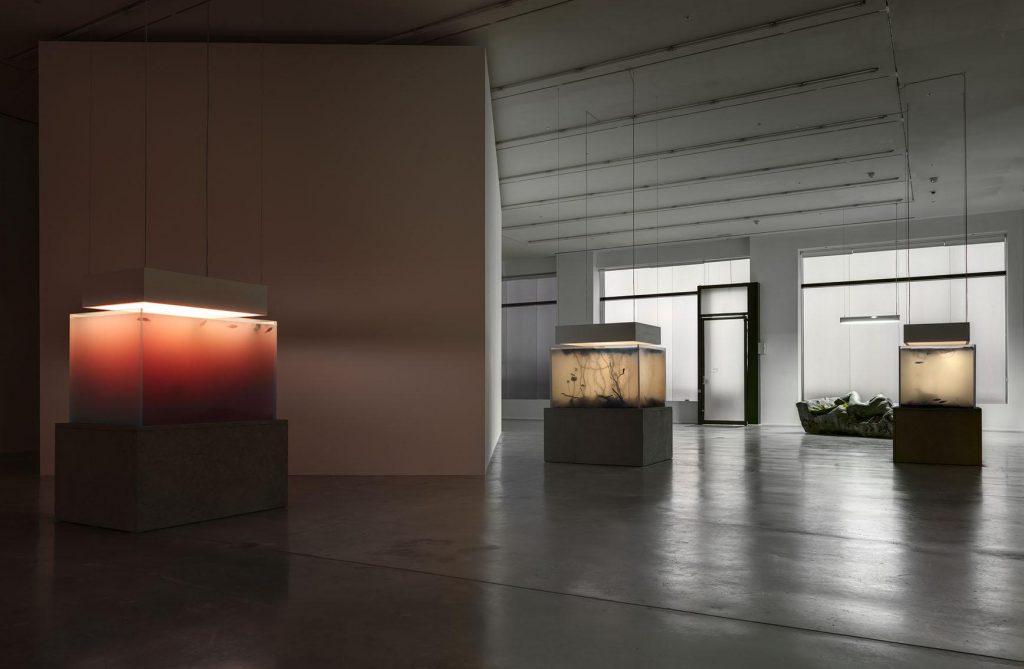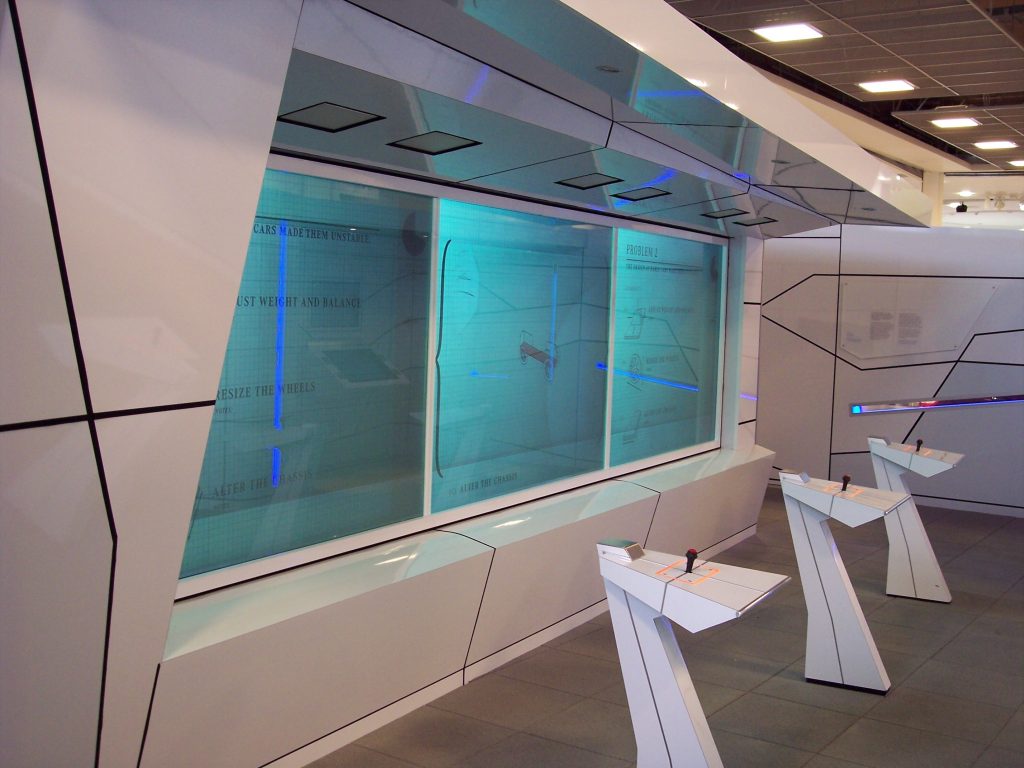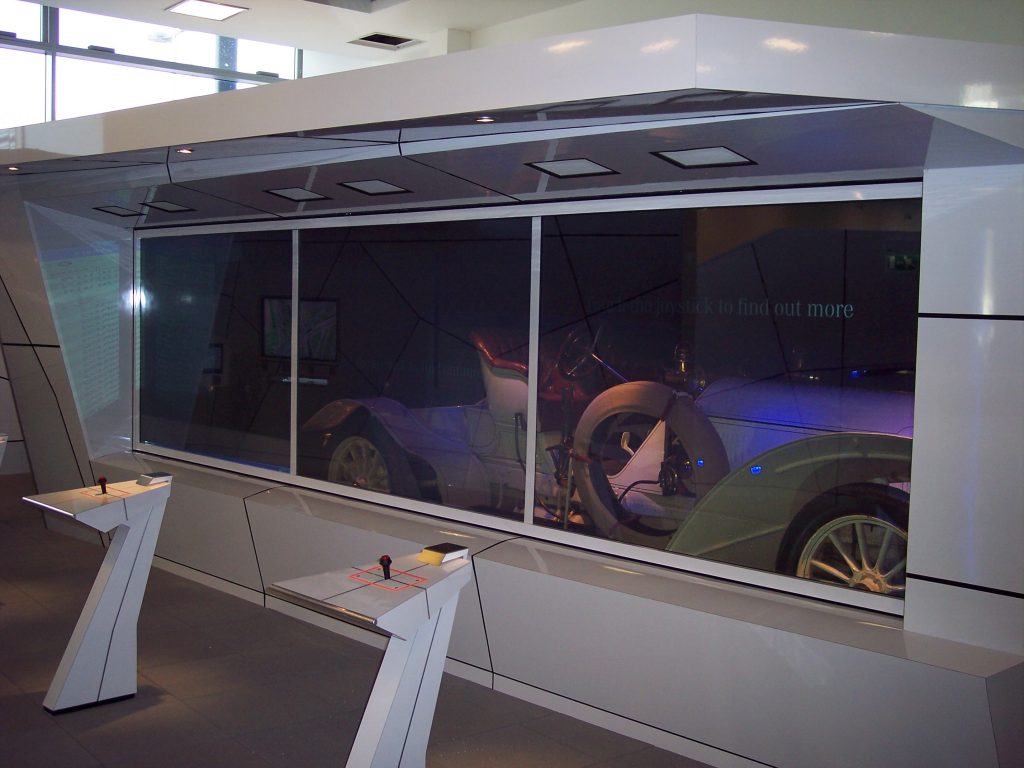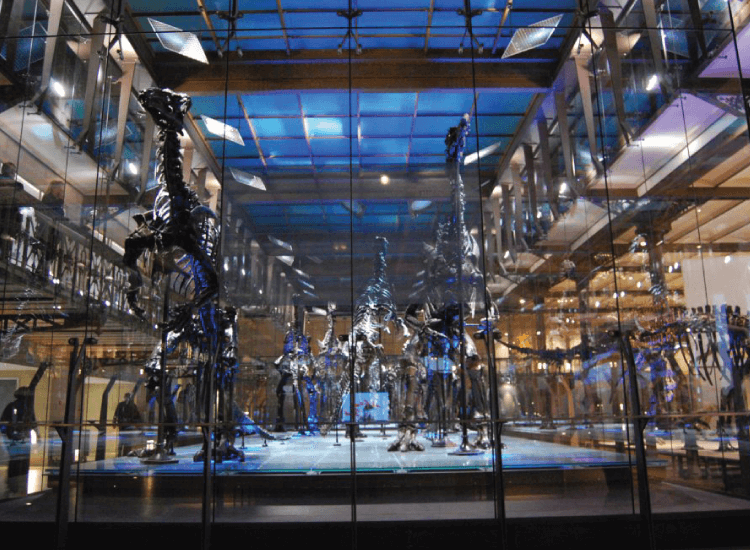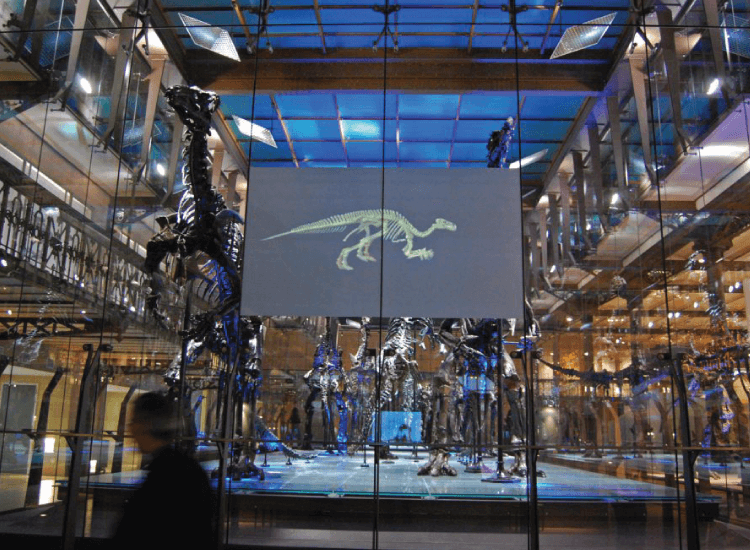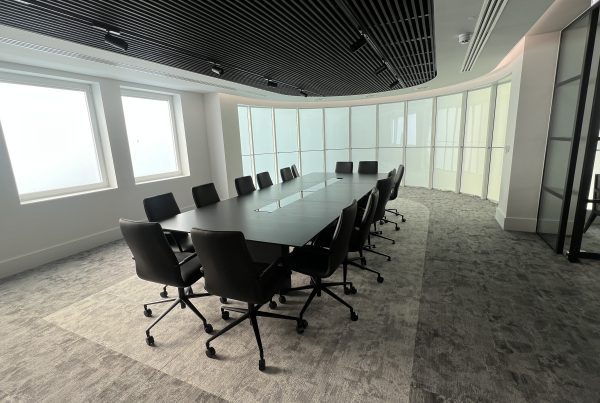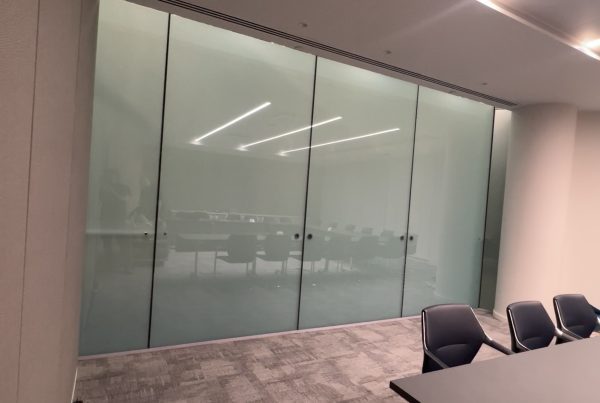The creative use of glass is at the heart of a wave of innovations sweeping through museums and art galleries around the world. Glass is being used to bring displays to life, to enhance the visitor experience, to better display art and artefacts, and to protect them.
Here we take a look at some of the most inspiring ways that glass is being used to revolutionise interior design and enhance the customer experience of museums and galleries.
Using Switchable Glass to create art
Over the years, our switchable technology has been specified by artists as a part of their installations, bringing art and technology together in a striking fashion. Our Switchable Film was used in Cecile B. Evans’ ‘Sprung a Leak’ exhibition, a three-act play exploring the movement of data, artificial intelligence and the relationship between humans and machines.
We also supplied our Laminate Switchable Glass for artist Pierre Huyghe, who used our technology to create aquariums for his world touring Nympheas Transplant exhibition. The aquariums were cleverly switched using timers in a pattern that had been designed by the artist himself, with the exhibition seeing our Switchable Glass travelling from London’s Saville Row to the skyline of New York City.
Take inspiration from the creatives by incorporating Switchable Glass into the building itself, whether it’s as a switchable glass partition to cleverly break up the space or as a projection screen that can ‘disappear’ when not in use!
Projection to bring art and exhibits to life
The goal of museums and galleries is to bring their collections to life in entertaining and creative ways to best engage their visitors. Galleries and museums around the world are embracing a range of the latest technologies to help in this goal, including an array of the latest projection screens. Projection screens allow images and video to be projected onto glass displays to show artefacts and art in rich detail, to offer talks from experts, and to provide context and background. With projection on to large panes of switchable glass and holographic effect screens, some truly impressive and captivating exhibits can be created.
We provided a stunning Switchable Glass Projection Display system for the Brooklands Museum, who used our technology to create an advanced concept for display cases. We supplied 3 pieces of Switchable Rear Projection Film for an interactive display at the museum. When turned off, the opaque canvas provides a HD/4K rear projection screen that visitors were able to interact with and when turned on, offered a holo-effect screen and revealing a Vintage Mercedes Benz motor.
Museum’s are also opting for using Switchable Glass Projection Screens with weighted cable systems to suspend the display screens from the ceiling. This is especially popular in listed buildings as the screens can be switched to clear when not in use, which doesn’t detract from the effect of the interior features.
Naturally, curators and artists need high-quality, crisp, vivid images to display their art and exhibits to maximum effect. Our sister company, Pro Display, recently worked with NOW Gallery in London to achieve this. Our experts provided three 4.6mx 2.15m projection screens that were installed onto existing windows to create a dramatic 4K display of images and video.
Glass to bring the outside inside
Museums and art galleries are increasingly incorporating large windows in renovations and new structures to create panoramic views of the outside world. Not only do the windows help to bring more light into interiors to better illuminate art and collections, but the windows allow views of the landscape outside to become an integral part of the experience.
Whilst using large glass façades can provide both stunning views and an abundance of light, direct sunlight could ruin artwork overtime or cause a distracting and uncomfortable glare. Using Switchable Glass not only reduces solar glare by up to 30%, it provides a more comfortable viewing environment for visitors whilst maintaining a bright and airy interior.
Switchable glass to balance exhibition with conservation
Museums and galleries face a dilemma. They want to exhibit their collections to maximum effect. Letting large amounts of natural light into their galleries and exhibition spaces is typically the best way to do this. But light, particularly sunlight, can damage artefacts. Sunlight can degrade the colours on paintings, fabrics, and other surfaces. It can also cause irreparable damage to delicate objects.
The latest smart glass technologies provide galleries and museums with the perfect solution to this dilemma. Switchable smart glass can be turned from transparent to opaque with the touch of a button, allowing curators to control the concentration of light that’s let into rooms and when. Smart glass can even be used to show exhibits only when a visitor approaches a display, or to show a painting only at set times throughout the day.
Switchable smart glass gives curators a level of control over light like never before possible. By applying switchable smart films to existing windows, museums and galleries can even access this technology without needing to refit their existing windows.
get in touch with us to find out more
Our experts are more than happy to talk to you about our products, to provide professional advice and to discuss the technologies discussed here. Please get in touch with us today.


